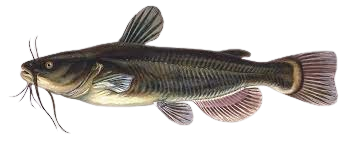Catfish live in both fresh and salty water. Lots of people like to keep them in aquariums.
Let’s find out if they can live without an air pump!
Can Catfish Live Without Air Pump: Yes, many catfish can live without an air pump.
They get oxygen from the water’s surface.
Can Catfish Live Without an Air Pump?
Yes, catfish can live without an air pump. Catfish are good at living in different water conditions.
People often use an air pump, in fish tanks to give fish more oxygen. But for catfish, it’s not a must-have.
Here are a few things to think about:
1. Oxygen
All fish need enough oxygen to stay healthy, and catfish are no exception.
If your fish tank is full or the water doesn’t move much, an air pump can help make sure there’s enough oxygen.
2. Tank Size
In small fish tanks, you might not need an air pump as much because there’s a lot of water surface.
But an air pump can be helpful in bigger tanks or ones with lots of fish.
3. Water Movement
Some catfish like calm water. If your catfish are from slow or still water, too many bubbles might not be good.
You can try gentler ways to move the water, like a sponge filter.
4. Filter
Sometimes, air pumps also power filters.
If your filter needs an air pump, you might need to find another way to filter the water.
Why Can Catfish Survive in Low Oxygen Conditions?

Catfish can survive in low oxygen conditions because of the breathing structures, pneumatic ducts, digging in, and breathing like betta fish.
1. Breathing Structures
Catfish have special parts in their gills called labyrinth organs.
These organs let them take in oxygen directly from the air, like a primitive lung.
2. Pneumatic Ducts
Some catfish have ducts connecting their swim bladders to their digestive systems.
This lets them gulp air from the water’s surface and get oxygen from it.
3. Taking it Easy
When there’s not enough oxygen, catfish can slow down their metabolism and activity levels.
This helps them save energy and survive in conditions that would be tough for other fish.
4. Digging In
Sometimes, catfish bury themselves in mud or sand.
This creates a small space with a bit more oxygen.
5. Breathing Like Betta Fish
Some catfish are like betta fish and can breathe air directly.
How Long Can Fish Live Without an Air Pump?
Fish can live without an air pump for a while, but it depends on different things like the kind of fish, the size of the tank, water temperature, and how clean the water is.
1. Kinds of Fish
Some fish need more oxygen than others.
Fish like bettas and gouramis can even breathe air, so they might be okay with less oxygen.
2. Tank Size
If your tank is big, there’s more water, and it can hold more oxygen.
But if it’s a small tank with a lot of fish, the oxygen might run out faster.
3. Water Temperature
Warmer water doesn’t have as much oxygen.
So, if your water is warm, the fish might need more oxygen.
4. Cleaning the Tank
Keeping the tank clean helps the fish breathe better.
If the water is dirty, it can make it harder for them to get oxygen.
5. Moving Water
Air pumps make bubbles that help get oxygen into the water. If you don’t have a pump, you can still create some movement with a filter or gentle water flow to help with oxygen.
Which Fish Can Live Without an Air Pump?
There are so many fish that can live without an air pump like betta fish, danios, tetras, gouramis, corydoras catfish, and livebearers.
1. Betta Fish (Betta splendens)
Bettas have a special organ that lets them breathe air at the water’s surface, so they don’t need an air pump.
2. Gouramis (e.g., Dwarf Gourami)
Like bettas, many gouramis have a special organ to breathe air and can do well without extra aeration.
3. Livebearers (e.g., Guppies, Platies, Mollies)
These fish are hardy and can handle various conditions, thriving without an air pump if the water quality is good.
4. Corydoras Catfish
Corydoras catfish can live happily without an air pump, using their gills to extract oxygen.
5. Kuhli Loach
These bottom-dwelling loaches are adaptable and don’t need an air pump, but they enjoy hiding spots.
6. Rasboras (e.g., Harlequin Rasbora)
Rasboras can thrive in calm waters without extra aeration.
7. Danios
Active swimmers like Zebra Danios can do well without an air pump.
8. Tetras (e.g., Neon Tetra)
Many tetras are suited to aquariums without an air pump, especially in community setups.
Can I Keep Fish Without an Oxygen Pump?
Yes, you can keep fish without an oxygen pump or air pump.
Here are some key factors to consider:
1. Filtration
A good quality aquarium filter is crucial for removing impurities, uneaten food, and waste from the water.
The filter also promotes the growth of beneficial bacteria that help break down harmful substances.
2. Water Circulation
Ensure proper water movement and circulation in the tank.
This can be achieved through the use of a well-designed filter or by strategically placing decorations to create natural water flow.
3. Live Plants
Live aquatic plants contribute to oxygen production through photosynthesis.
They also help in maintaining water quality by absorbing carbon dioxide and producing oxygen.
4. Stocking Density
Avoid overstocking the aquarium, as a higher fish population leads to increased oxygen consumption.
5. Regular Water Testing
Monitor water parameters regularly, including pH, ammonia, nitrite, and nitrate levels.
Keeping these parameters within acceptable ranges is essential for the well-being of your fish.
6. Surface Area
A larger surface area allows for efficient gas exchange between water and air.
This is where oxygen enters the water, and carbon dioxide is released.
A well-designed tank with ample surface area promotes natural oxygen exchange.
7. Cloudy Water
If your water looks cloudy or muddy, it could be a sign of poor water quality, including low oxygen.
What Water is Best for Catfish?
Maintaining the right water conditions is crucial for the health of your catfish in the aquarium.
Maintain pH levels between 6.5 and 7.5, and maintain oxygen levels.
1. pH Level
Aim for a slightly acidic to neutral pH, usually between 6.5 and 7.5.
Make sure to check the specific pH preferences of your catfish species.
2. Temperature
Keep the water temperature between 72°F to 78°F (22°C to 26°C).
Adjust based on the specific needs of your catfish species.
3. Water Hardness
Catfish can handle a range of water hardness.
Keep conditions stable, avoiding sudden changes.
4. Ammonia, Nitrite, and Nitrate
Ensure that ammonia and nitrite levels are consistently zero by completing the nitrogen cycle.
Manage nitrate levels through regular water changes.
5. Oxygen Levels
Maintain well-oxygenated water with proper filtration, surface agitation, and aeration.
Also Read:
FAQs
Can catfish live without an air pump in a bowl?
Catfish can survive in a bowl without an air pump, but it’s recommended for optimal oxygenation.
Do red-tail catfish need an air pump?
Red-tail catfish benefit from an air pump to maintain oxygen levels in the aquarium.
Can Cory catfish live without an air pump?
Cory catfish can live without an air pump, but aeration enhances their well-being.
Do catfish need oxygen in a pond?
Catfish in a pond need oxygen; a pump or natural aeration is essential for their survival.
How long can fish survive in a pond without a pump?
Fish in a pond can survive without a pump for varying durations, depending on size and conditions.
Does rain add oxygen to a pond?
Rain can increase oxygen levels in a pond, benefiting fish.
What is the lifespan of a catfish?
Catfish lifespan varies by species; some live decades, while others have shorter lifespans.

I love animals & want to know more about different creatures & sharing their stories with everyone. From my childhood, I’ve been exploring forests & watching animals in their homes.
Now, I write about my adventures & all the amazing things I learned. My blogs are easy to understand & make you want to know more about animals. I teach about why animals are important & why we should take care of them.

